You are here
New Releases
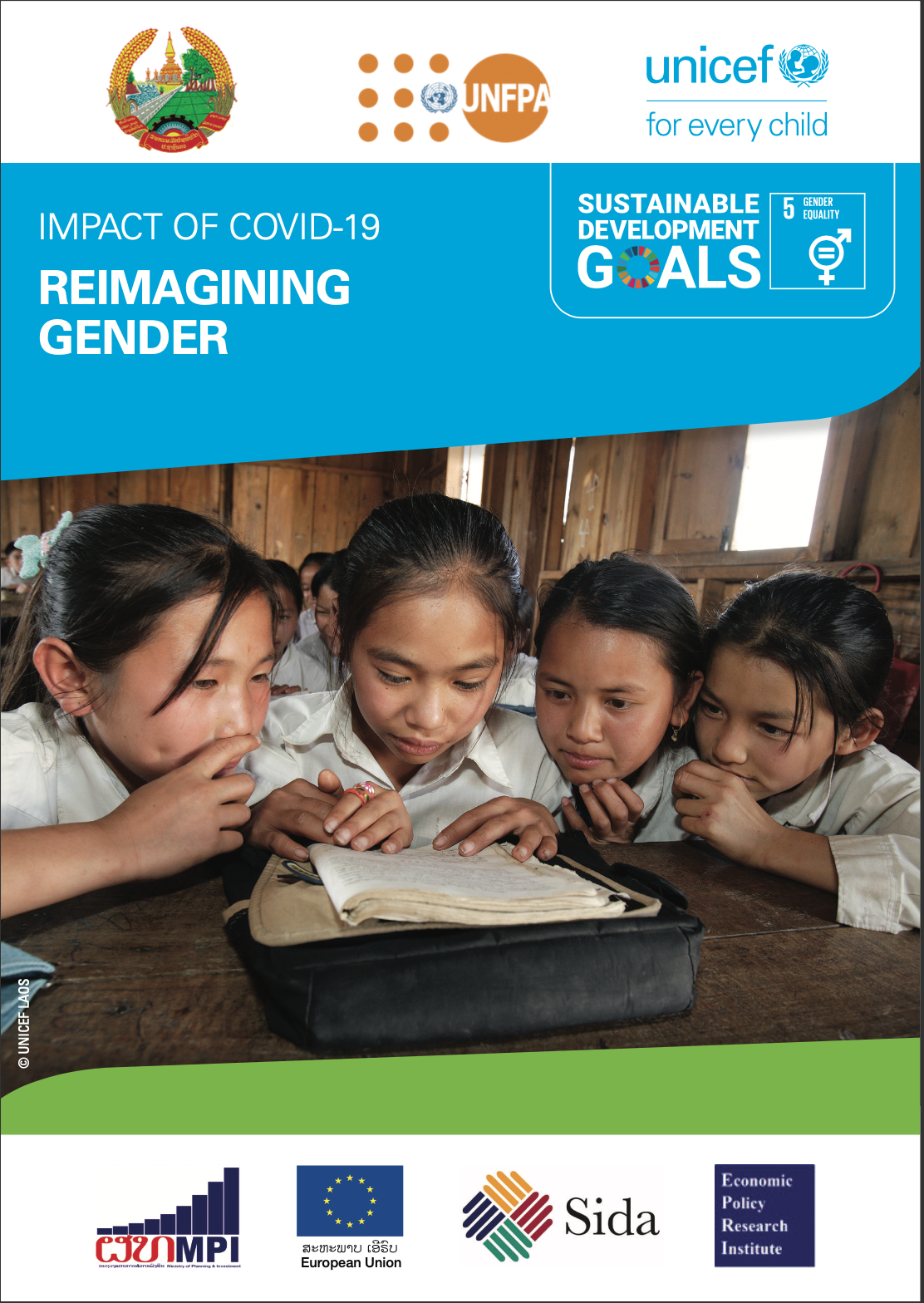
IMPACT OF COVID-19 REIMAGINING GENDER
The gendered impacts of infectious disease outbreaks have been well-documented in the most recent epidemics, such as Zika, SARS and Ebola. Ebola demonstrated the powerful effects of the combination of a health and economic shock, and the effects of public health measures on women. The COVID-19 pandemic has exposed both the higher incidence and intensity with which women experience poverty and vulnerability compared to men.
Impacts of COVID-19 on livelihoods, poverty, health, food security and nutrition are being felt globally, but for women, women-led households and young adolescent girls and children, the gravity of impact is far higher. The heightened risk is either an outcome of structural differences between the livelihood sources of men and women or the impact of gender bias on access to basic goods and services. The gendered differences in access to human capital accumulation opportunities (i.e., health and education), agency and economic opportunities are fuelled by unequal social norms and power structures. Gender norms and practices collectively predisposition women for worse outcomes. The COVID-19 pandemic has exposed the depth and extent of these gender inequalities that persist in many societies across the globe.
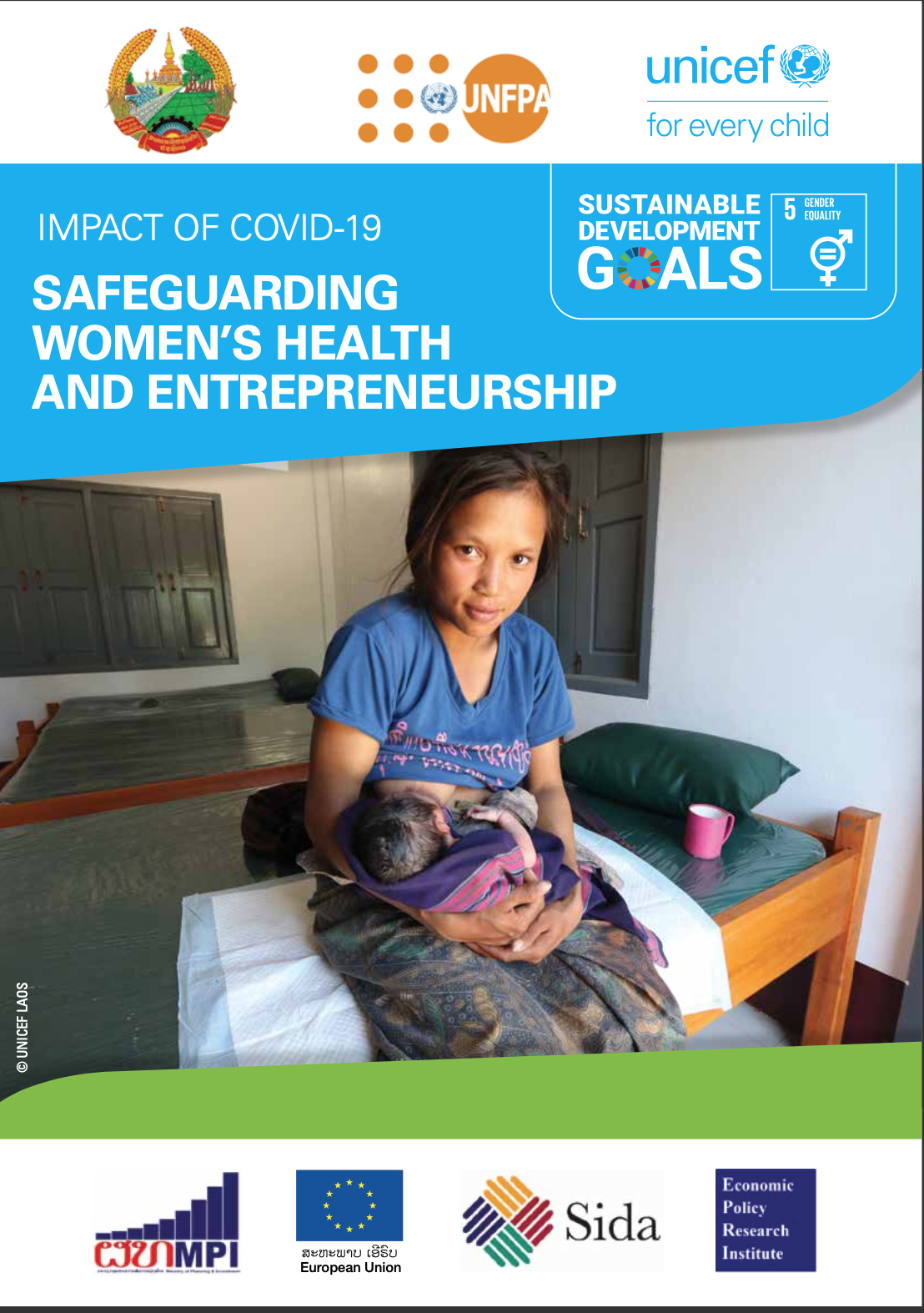
IMPACT OF COVID-19 SAFEGUARDING WOMEN’S HEALTH AND ENTREPRENEURSHIP
The COVID-19 pandemic has exposed the depth and extent of gender inequalities that persist in many societies across the globe. The gendered impact of COVID-19 can be seen across every sphere implicated in the pandemic. First, compared to “regular” financial and economic recessions, which tend to affect men’s employment more severely, the job losses brought on by social distancing measures, border closures, and lockdowns have a significant impact on sectors with high female employment rates. For instance, in Lao PDR women make up most of the workforce in the garment and tourism industries, both of which suffered severe external shocks. Second, the closure of schools and day care centres have significantly increased childcare needs, which mainly affects working mothers and adolescent girls. Third, while early evidence suggests that men are more at risk of dying from COVID-19 than women, the diversion of financial and human resources away from sexual and reproductive health services adversely affect women and girls’ wellbeing. Finally, the COVID-19 pandemic and its corresponding mitigation measures have significantly increased women and girls’ exposure to gender-based violence (GBV). According to our recent discussions with stakeholders, Lao PDR has not been exempted from this trend. In cases when GBV occur, restrictions on movement mean that victims will face challenges accessing protection shelters and health care services. Furthermore, quarantine measures and school closures confine adolescent girls to spaces where they are in direct contact with potential perpetrators.
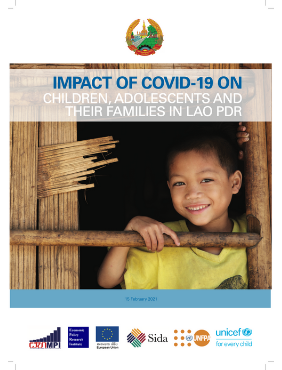
IMPACT OF COVID-19 ON CHILDREN, ADOLESCENTS AND THEIR FAMILIES IN LAO PDR
Lao PDR has made remarkable progress in recent years in many sectors, halving monetary poverty, reducing malnutrition and improving education and health outcomes. However, the COVID-19 pandemic poses a significant threat to the gains made and may negatively affect the country’s goal of LDC graduation by 2024.
In response to the potential impact of COVID-19, the Centre for Development Policy Research (CDR) and the Ministry of Planning and Investment (MPI), with the support of UNICEF, UNFPA, the European Union and SIDA, commissioned a study to assess the social and economic impact of the pandemic on children, adolescents and women in Lao PDR. This evidence will guide the Government’s possible interventions as well as feed into the current National Social Economic Development Plan (9th NSEDP), while considering the vulnerabilities of the populations in the country. As a country, we are committed to seeking appropriate interventions and initiatives to prevent our people from hardship caused by the social and economic impacts of the COVID-19 pandemic. The evidence in these reports demonstrates our commitment.
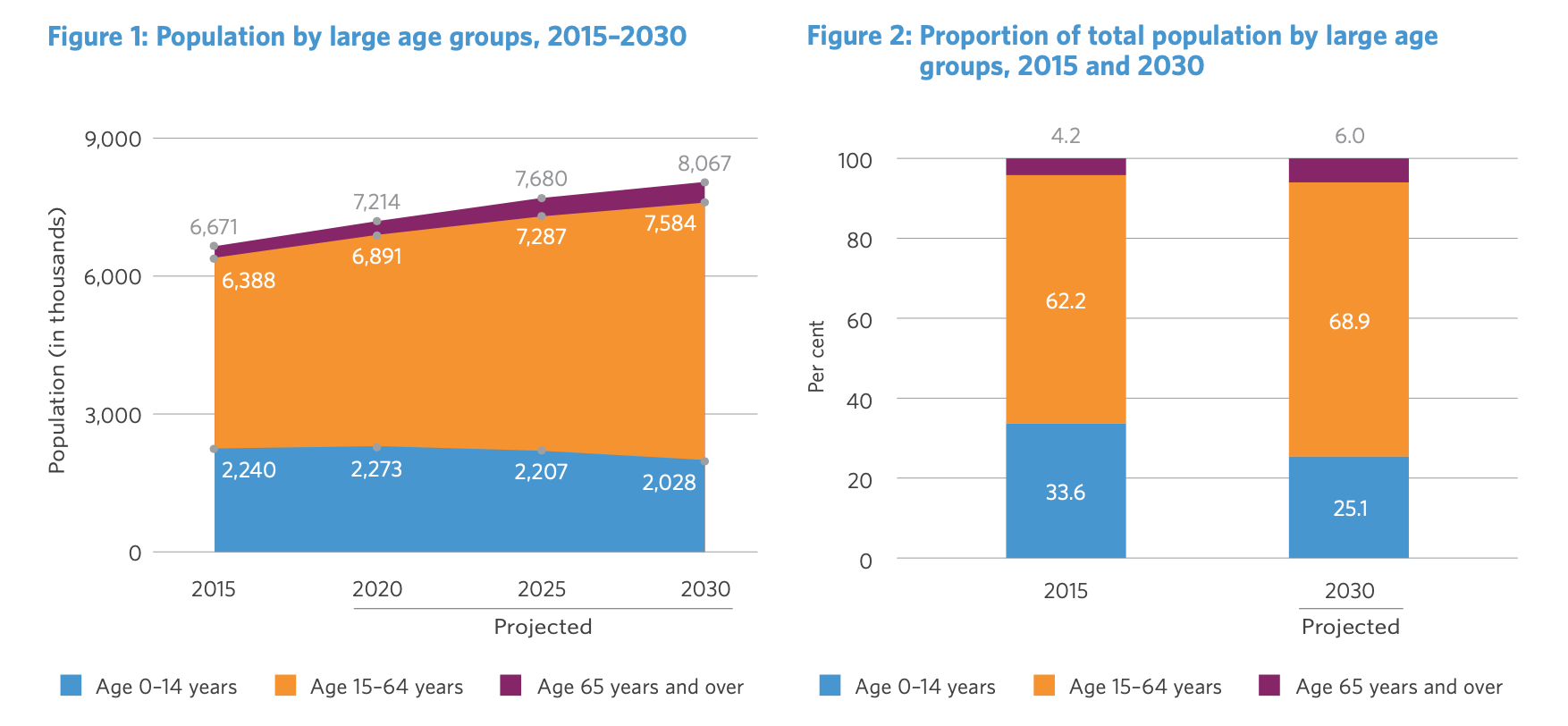
WINDOW OF OPPORTUNITY FOR REALIZING A DEMOGRAPHIC DIVIDEND 2021: HEALTH Policy Brief
WINDOW OF OPPORTUNITY FOR REALIZING A DEMOGRAPHIC DIVIDEND 2021: HEALTH Policy Brief
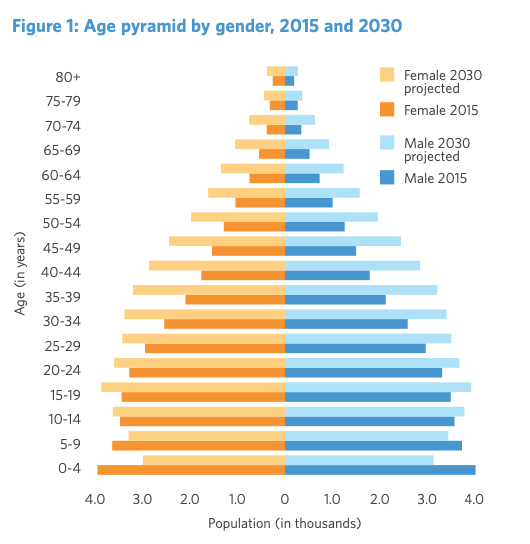
WINDOW OF OPPORTUNITY FOR REALIZING A DEMOGRAPHIC DIVIDEND 2021: EDUCATION Policy Brief
WINDOW OF OPPORTUNITY FOR REALIZING A DEMOGRAPHIC DIVIDEND 2021: EDUCATION Policy Brief
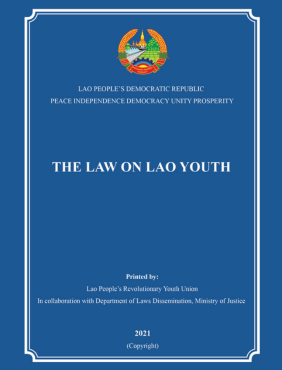
The Law on Lao Youth - ກົດໝາຍວ່າດ້ວຍຊາວໜຸ່ມລາວ
The Law on Lao Youth - ກົດໝາຍວ່າດ້ວຍຊາວໜຸ່ມລາວ
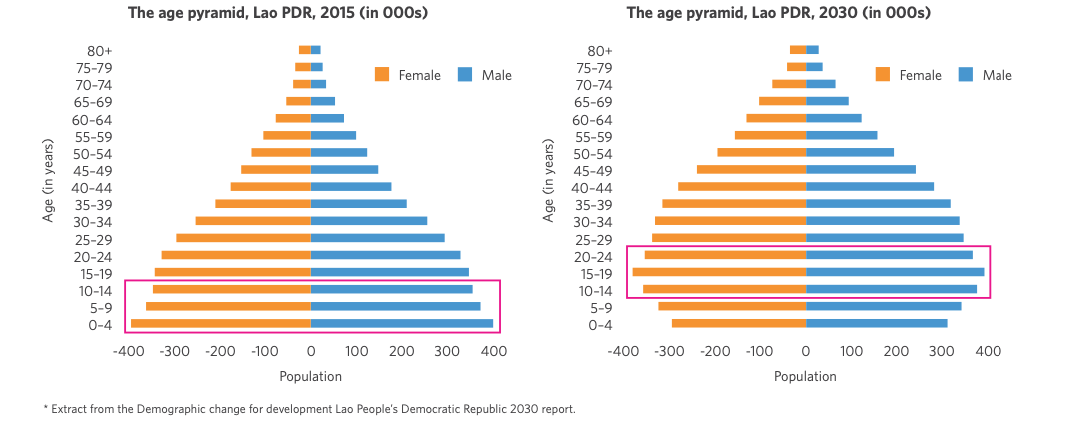
WINDOW OF OPPORTUNITY FOR REALIZING A DEMOGRAPHIC DIVIDEND 2021
WINDOW OF OPPORTUNITY FOR REALIZING A DEMOGRAPHIC DIVIDEND*
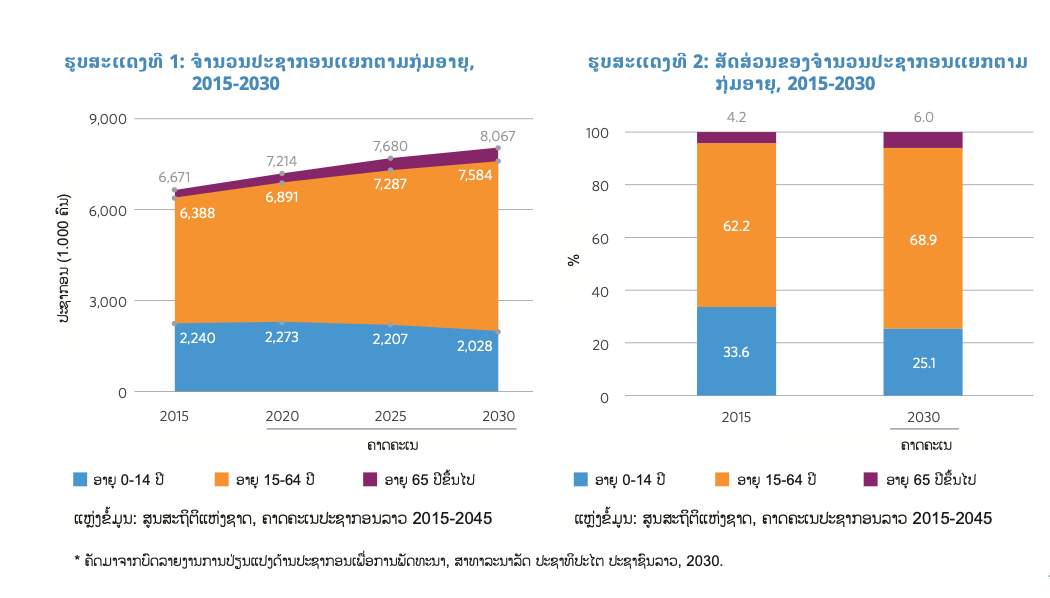
ນະໂຍບາຍສາທາລະນະສຸກ
ການເຕີບໂຕຂອງປະຊາກອນ ຢູ່ໃນສປປລາວ ພ້ອມກັບການປ່ຽນແປງໂຄງສ້າງ ແລະ ການແຈກຢາຍໄປຕາມຂົງເຂດຕ່າງໆພາຍໃນປະເທດ ອາດຈະສົ່ງຜົນກະທົບຢ່າງແນ່ນອນ ຕໍ່ກັບການບໍລິການດ້ານສາທາລະນະສຸກ ຂອງສປປລາວ ຮອດປີ2030. ເປັນທີ່ແນ່ນອນແລ້ວວ່າ ເມື່ອຈຳນວນປະຊາກອນເພີ່ມຂຶ້ນ ຄວາມຕ້ອງການໃນການບໍລິການທາງແພດ ແລະຕຽງນອນຄົນເຈັບຢູ່ໃນໂຮງໝໍ ກໍຈະຕ້ອງເພີ່ມຂຶ້ນເຊັ່ນດຽວກັນ. ໂດຍລວມແລ້ວ ຄາດວ່າຈຳນວນປະຊາກອນຈະແນ່ນອນແລ້ວສັດສ່ວນຂອງຈຳນວນປະຊາກອນໃນແຕ່ລະກຸ່ມອາຍຸກໍຈະມີຄວາມແຕກຕ່າງກັນອອກໄປ.
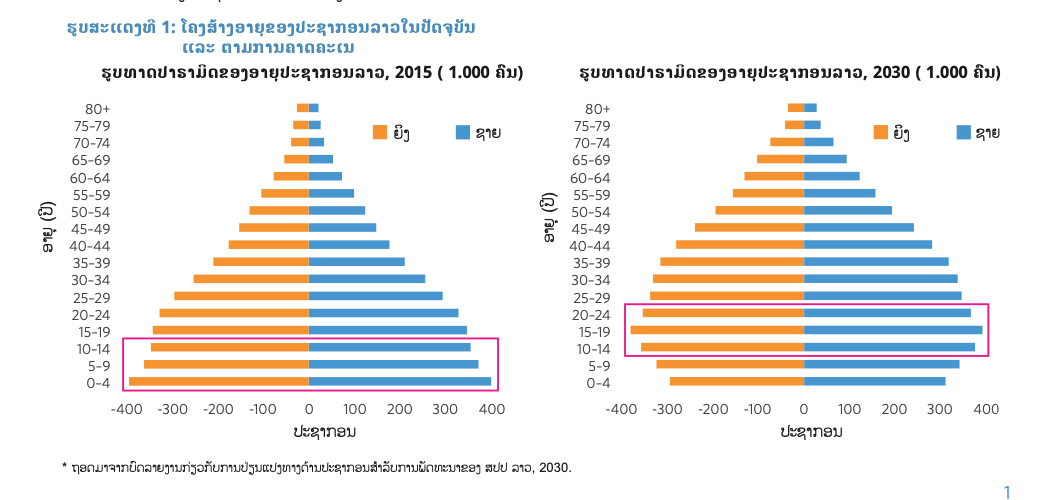
ຊ່ອງທາງສຳລັບກາລະໂອກາດໃນການເຮັດໃຫ້ເກີດການປັນຜົນດ້ານປະຊາກອນ ຂອງສປປລາວ
ສປປລາວ ແມ່ນຢູ່ໃນໄລຍະຕົ້ນຂອງການຂ້າມຜ່ານດ້ານປະຊາກອນ ເຊິ່ງລວມທັງການປ່ຽນແປງດ້ານອັດຕາການຕາຍ ການຈະເລີນພັນ ແລະອັດຕາການຂະຫຍາຍຕົວຂອງປະຊາກອນ ເຊິ່ງມີການປະສົມປະສານກັບການຂະຫຍາຍຕົວກາຍເປັນຕົວເມືອງເພີ່ມ.
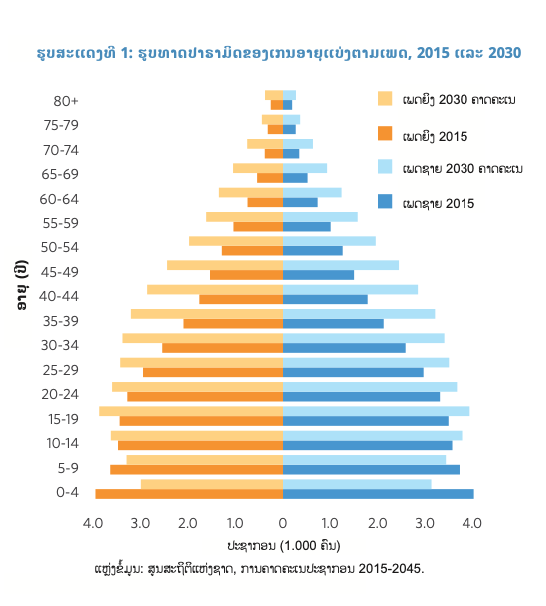
ນະໂຍບາຍດ້ານການສຶກສາ
ສປປລາວ ແມ່ນຢູ່ໃນໄລຍະກາງຂອງການປ່ຽນແປງທາງດ້ານປະຊາກອນ ຂອງປະເທດຢ່າງວ່ອງໄວ.ອັດຕາການຕາຍຂອງປະຊາກອນທີ່ຫຼຸດລົງໄວແມ່ນຍ້ອນ ການເກີດທີ່ຫຼຸດລົງເຊິ່ງເປັນປັດໄຈຫຼັກຂອງການຂະຫຍາຍາຕົວດ້ານປະຊາກອນເຮັດໃຫ້ໂຄງສ້າງທາງດ້ານປະຊາກອນ ( ຮູບພາບປາຣາມິດ) ມີການປັບໂຄງສ້າງ.